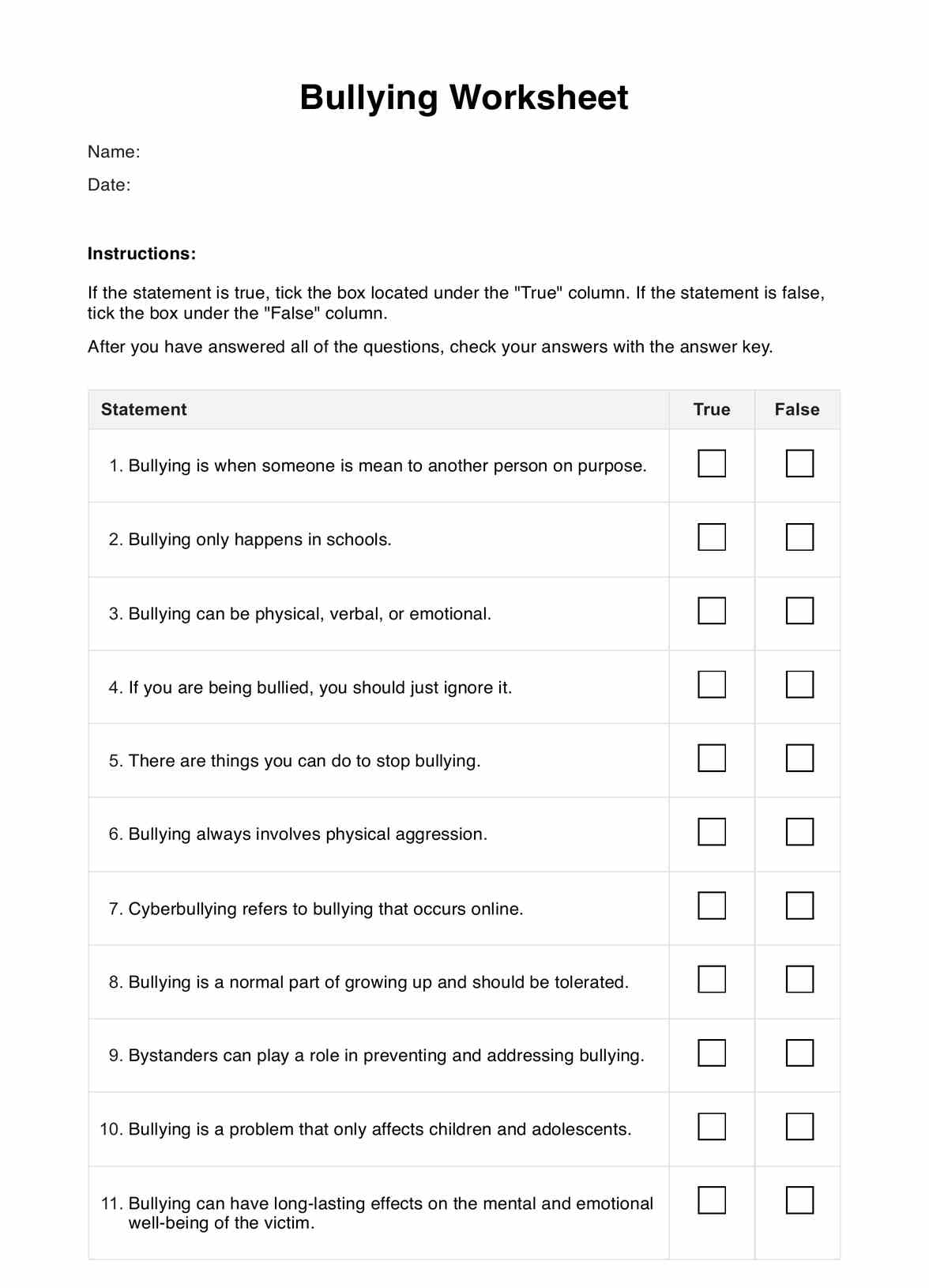Teachers, school counselors, parents, and students benefit from a comprehensive bullying worksheet. They aid in educating students about bullying, developing coping mechanisms, and understanding its consequences. These worksheets provide a safe space for discussions and help promote effective strategies for addressing bullying.

Bullying Worksheet
Useful Bullying Worksheet PDF to provide essential insights, assessment queries, and recommended tactics to help combat bullying.
Bullying Worksheet Template
Commonly asked questions
Utilized in different situations, these worksheets are useful when incorporated into anti-bullying curricula to educate students about bullying and its resolution. They also assist students who are being bullied in developing coping mechanisms and comprehending the consequences of bullying.
They are introduced to participants, who then complete the worksheet at their own pace.
Facilitators provide support during the process, and afterward, a debriefing session allows for further discussion and reinforcement of key concepts.
EHR and practice management software
Get started for free
*No credit card required
Free
$0/usd
Unlimited clients
Telehealth
1GB of storage
Client portal text
Automated billing and online payments











